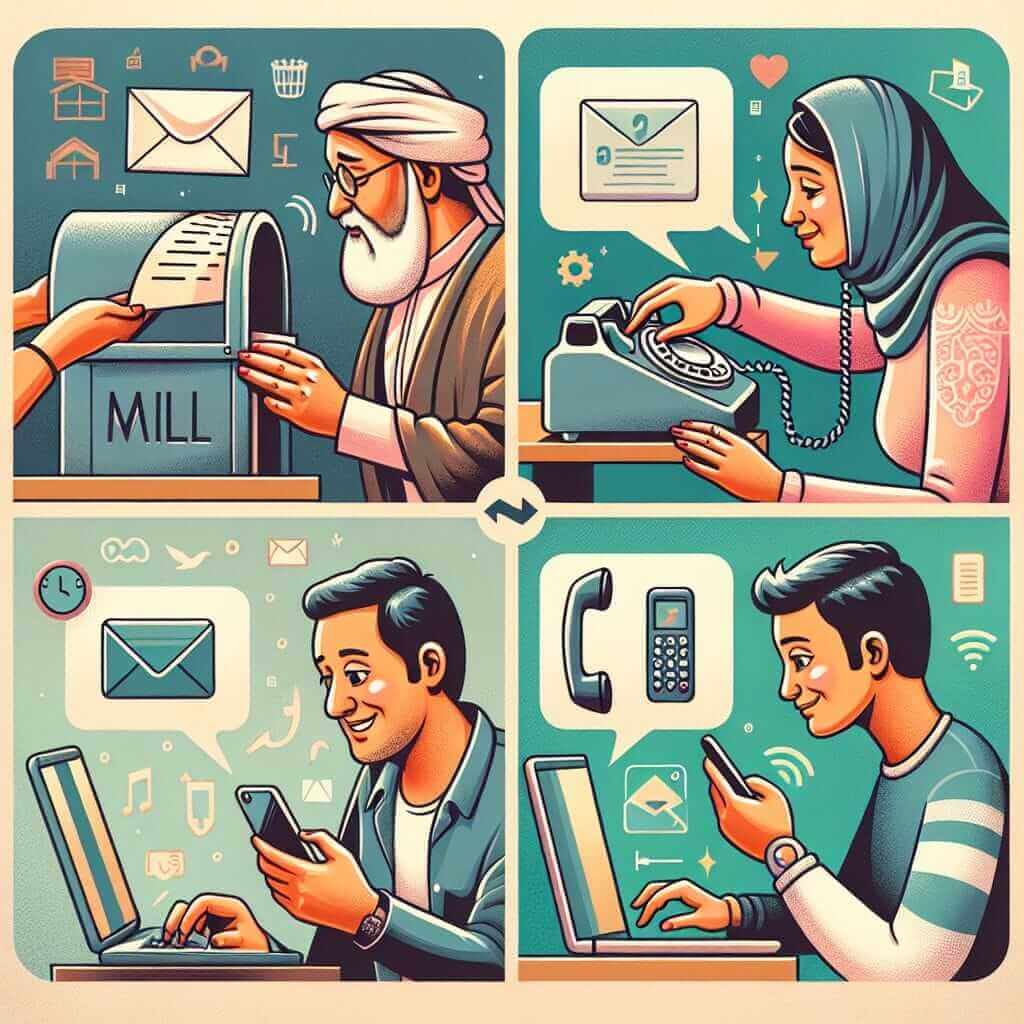The IELTS Reading section is a crucial component for candidates aiming to achieve a high band score. Topics often reflect contemporary issues, and one prevalent subject is the impact of digital technology on traditional communication forms. This topic has appeared in past IELTS exams, and given the pervasive influence of digital technology in our lives, it remains a relevant and likely future exam subject.
Main Content
1. Reading Passage: The Digital Technology and Traditional Communication
Context & Background:
Digital technology has revolutionized how we communicate, leading to a dynamic shift from traditional methods such as face-to-face conversations and written letters to digital forms like emails, text messaging, and social media interactions. This transformation has profound implications on the quality and nature of communication.
Reading Passage (Medium Text)
Digital technology has undeniably transformed the way we communicate, influencing not only the methods we use but also the depth and quality of interactions. In the past, communication was largely face-to-face, or involved handwritten letters that took days, if not weeks, to arrive. These traditional forms of communication fostered patience, anticipation, and often a deeper emotional connection between individuals.
However, the dawn of digital technology has fundamentally altered this landscape. The immediacy of emails, text messages, and social media platforms allows for instant communication, making the world feel smaller and more connected. While this can be seen as a positive development, enhancing efficiency and accessibility, it has also raised concerns about the erosion of meaningful interaction.
For instance, face-to-face communication allows for non-verbal cues, such as body language and facial expressions, which are crucial for understanding the full context of a conversation. Digital communication, by its nature, often strips away these subtle nuances, leading to potential misunderstandings. Additionally, the brevity encouraged by text messaging and social media updates can result in oversimplification of complex issues, reducing the richness of discussions.
Moreover, the popularity of social media has introduced new dynamics into personal interactions. These platforms often encourage superficial connections, where the quantity of friends or followers is emphasized over the quality of relationships. The constant stream of updates and notifications can also lead to information overload, making it challenging to focus on meaningful dialogue.
Equally important is the impact of digital technology on professional communication. Virtual meetings and emails have replaced traditional face-to-face business interactions. While this transition has increased productivity and flexibility, it has also created challenges such as the loss of personal touch and the difficulties in building trust and rapport through screens.
In conclusion, while digital technology has undoubtedly made communication more convenient and far-reaching, it is essential to recognize and address its limitations. Finding a balance between the efficiency of digital communication and the depth of traditional interactions is crucial for maintaining meaningful and effective communication in the digital age.
 digital_vs_trad_communication
digital_vs_trad_communication
2. Questions
Type: Multiple Choice, True/False/Not Given, Matching Information
Questions
Multiple Choice
-
What is one benefit of traditional forms of communication mentioned in the passage?
- A. Instant delivery
- B. Emotional connection
- C. Increased productivity
- D. Information overload
-
According to the passage, what is a negative impact of digital communication on personal interactions?
- A. Enhanced accessibility
- B. Deepened understanding
- C. Superficial connections
- D. Reduced efficiency
True/False/Not Given
3. Digital technology has made the world feel smaller and more connected. (True/False/Not Given)
4. The passage states that digital communication always leads to meaningful dialogue. (True/False/Not Given)
Matching Information
Match the following impacts of digital technology on communication with the corresponding descriptions:
-
- Immediacy of digital communication
-
- Non-verbal cues in communication
-
- Superficial connections on social media
-
- Professional communication challenges
A. Loss of personal touch in business
B. Potential misunderstandings due to lack of nuances
C. Instant responses and connectivity
D. Focus on the number of connections rather than quality
3. Answers
- B
- C
- True
- False
- C
- B
- D
- A
4. Common Mistakes
- Overlooking Context: Many students miss the overall context, focusing only on specific words or phrases.
- Misinterpreting True/False/Not Given: This type of question often confuses candidates when they assume information not stated in the text.
- Ignoring Keywords: Ignoring keywords like “always” or “never” can lead to incorrect answers.
5. Vocabulary
- Immediacy (n) /ɪˈmiː.di.ə.si/: The quality of bringing one into direct and instant involvement.
- Erosion (n) /ɪˈroʊ.ʒən/: The gradual destruction or diminution of something.
- Nuance (n) /ˈnjuː.ɑːns/: A subtle difference in meaning or opinion or attitude.
- Superficial (adj) /ˌsuː.pɚˈfɪʃ.əl/: Existing or occurring at or on the surface.
6. Grammar
-
Passive Voice: Used to shift the focus from the subject to the action.
- Formula: Subject + Auxiliary Verb (be) + Past Participle + (by Agent)
- Example: “The passage was written by the author.”
-
Complex Sentences: Combining dependent clauses with independent ones to give more detail.
- Example: “While digital technology has undoubtedly made communication more convenient, it is essential to recognize and address its limitations.”
Conclusion
Balancing digital and traditional forms of communication is essential for effective interaction. Practicing through well-structured reading passages can enhance understanding and performance in the IELTS Reading section. Remember, consistency and understanding the nuances of the language are key to excelling.


